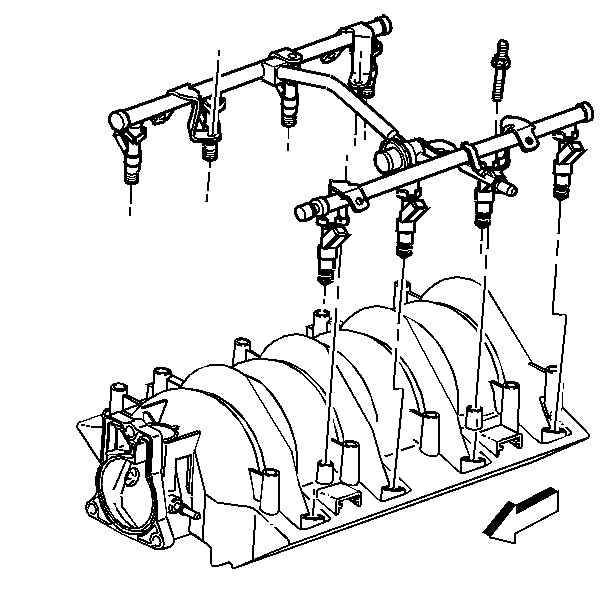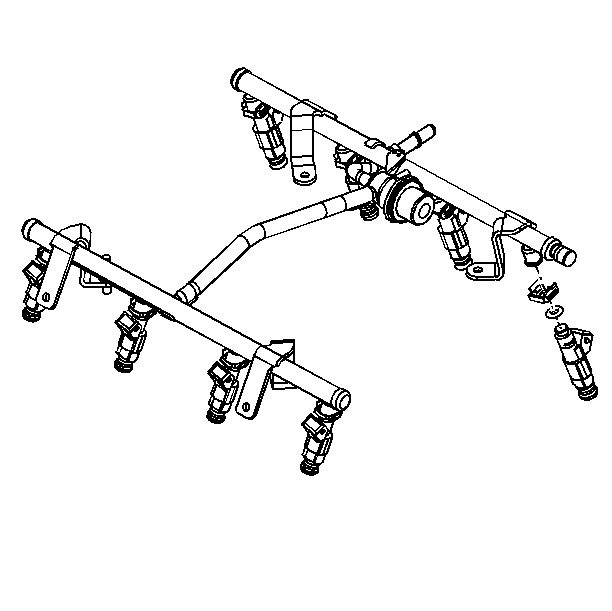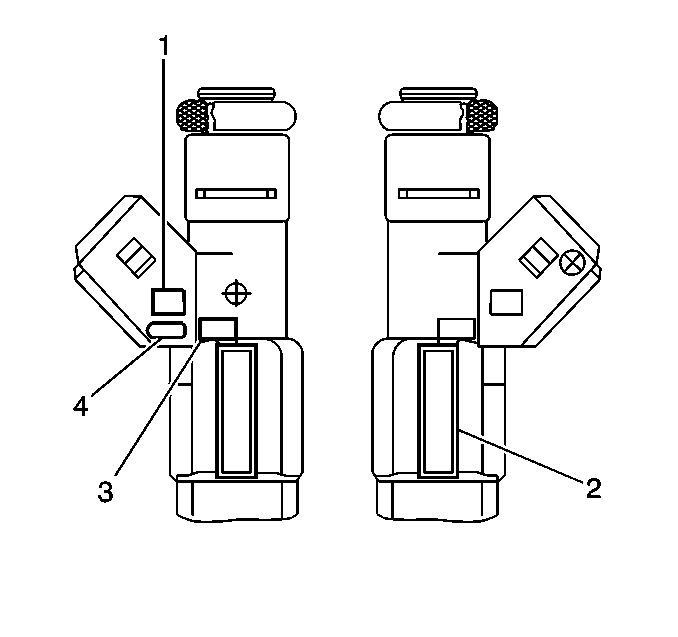For 1990-2009 cars only
Removal Procedure
- Disconnect the negative battery cable. Refer to Battery Negative Cable Disconnection and Connection in Engine Electrical.
- Relieve the fuel system pressure. Refer to the Fuel Pressure Relief .
- Remove the fuel rail assembly. Refer to Fuel Injection Fuel Rail Assembly Replacement .
- Spread the injector retainer clip to release the injector from the fuel rail.
- Remove the fuel injector.
- Remove the injector O-ring seals from both ends of the injector.
Caution: Refer to Battery Disconnect Caution in the Preface section.

Important: Leaking fuel injectors may contaminate the engine oil with fuel.

Notice: Use care in removing the fuel injectors in order to prevent damage to the fuel injector electrical connector pins or the fuel injector nozzles. Do not immerse the fuel injector in any type of cleaner. The fuel injector is an electrical component and may be damaged by this cleaning method.
Installation Procedure
- The fuel injector assembly is stamped with a part number identification (2), a manufacturing date (3), a week code (1), and a production plant number (4).
- Lubricate the new injector O-ring seals with clean engine oil.
- Install the new injector O-ring seals on the injector.
- Install a new retainer clip on the injector.
- Push the fuel injector into the fuel rail injector socket with the electrical connector facing outward.
- Install the fuel rail assembly. Refer to Fuel Injection Fuel Rail Assembly Replacement .
- Tighten the fuel filler cap.
- Connect the negative battery cable. Refer to Battery Negative Cable Disconnection and Connection in Engine Electrical.
- Inspect for leaks.

Important: When ordering new fuel injectors, be sure to order the correct injector for the application being serviced.
Inspect the new injectors in order to ensure installation of the correct part.


| 9.1. | Turn the ignition switch ON for 2 seconds. |
| 9.2. | Turn the ignition switch OFF for 10 seconds. |
| 9.3. | Turn the ignition switch ON. |
| 9.4. | Inspect for fuel leaks. |
